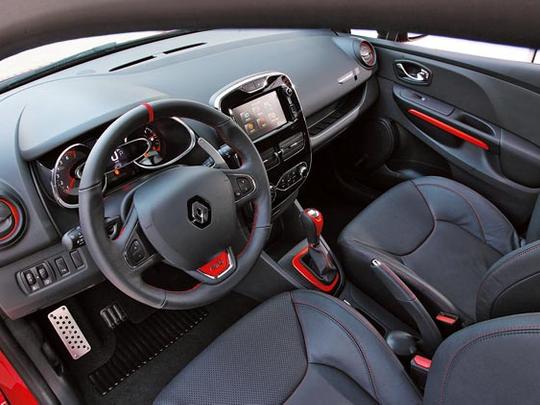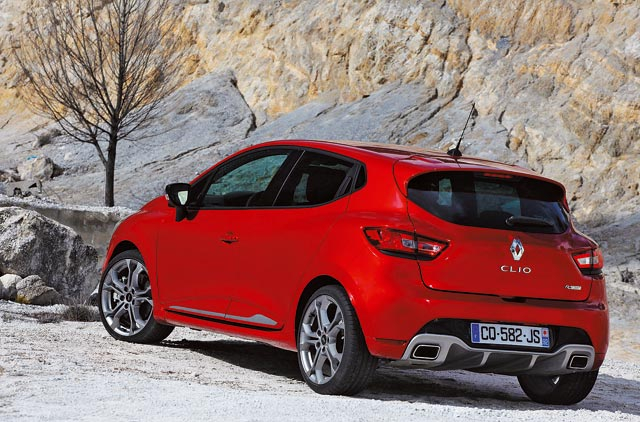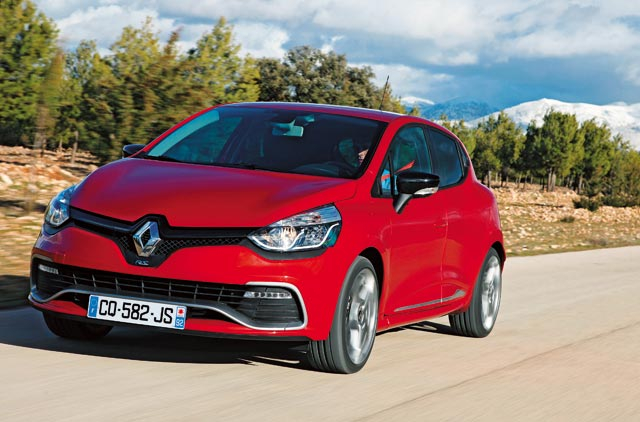
The Renault Clio RS has changed.
The all-new turbocharged hot hatch has ditched its unique old-school naturally aspirated charm for 21st-century technology, and it’s a very different animal to any past hot Clio.
Those people following the saga carefully will already know about the new car’s key point — its downsized engine, shrunk from 2.0 litres to 1.6, and now coupled to a turbo that has boosted power back to the same 197bhp as the previous model.
But while that will immediately put some hardcore Renaultsport enthusiasts off, there’s a lot more going on here than meets the eye. The fourth-generation Renaultsport Clio is built for a changing demographic, where cars are becoming less frequently seen as toys and more often seen as expensive necessities that it’s nice to enjoy now and again. The old torque-shy Clio RS was too much like hard work for the silent majority and the sales figures showed it. Its replacement had to be different.
It ticks that box with gusto, because not only is the engine completely different: it puts power down through a twin-clutch automatic transmission — there’s no manual option unless you count the almost completely manual ‘Race’ mode within the three-way ‘RS Drive’ driving mode selector.
Renault wants this Clio to be more accessible, easier to drive fast and better in terms of motorway cruising and everyday use. So it’s appropriate, then, that we start with the softer standard chassis as opposed to the 15 per cent stiffer Cup set-up. With the gearbox in full-auto and the RS Drive mode set to Normal, the Clio immediately shows the sort of user-friendliness that was always missing from its predecessors, largely thanks to peak torque arriving at 1,750rpm. In traffic it shuffles gears smoothly and without fuss, letting you dictate upshift points based on throttle pressure.
It’s not overly exciting though. So pressing the centrally mounted RS Drive button brings up a Sport mode where the steering is firmer, the gear shifts are faster and come at higher revs by default. Other small factors are also engaged, like a higher idle point and reduced traction control response. Now some slip is allowed, and this is where things start to get interesting.
Renaultsport’s engineers have deliberately engineered-in more movement into the new Clio’s driving characteristics, so both the front and rear end will move laterally together or separately if you want them to. In Sport mode you can start to make use of the neutral and forgiving balance inherent in the chassis, lifting off as you turn in to bring the rear into play and tuck the nose right into an apex.
Race mode is where the car comes alive, though. It completely disengages the stability control, accepts only manual gear shifts and speeds the ratio changes up to a very rapid 150 milliseconds. In tangible terms Race mode gear changes give you a satisfying thump in the kidneys, especially between the first three cogs. Plus, the cheeky popping from the exhaust that had started to come to the fore in Sport is even clearer. Charging through every gear to the rising rush of air being forced ever more brutally into the engine, each 6,000rpm upshift rewards you with a roguish little bang from the tailpipe. It’s addictive stuff.
But within all this police-displeasing action there’s a flaw. There’s a huge gap between second and third gears and a lot of the time through tight corners you’re crying out for a ratio between the two. Second instantly runs out of legs and third doesn’t quite get going for a couple of seconds. Renault’s engineers say the ratios are a necessary compromise between efficiency and pace, but it’s likely they’ll be changed at the first chance.
In terms of handling the Clio RS is better with the optional Cup chassis, which dials out the smidgen of mid-corner bounciness left in the standard car. It’s a very stable platform but either end will readily move if you push it hard. The great thing is that it moves with you in a predictable way rather than trying to catch you out, and that makes it very easy to drive quickly.
There was time to test the Cup chassis on a circuit, too, and track-day enthusiasts won’t be disappointed. Pushing the car to its very limits it’s fair to say you’re absolutely glad to have the dual-clutch gearbox. That leaves you mental space to exploit the taut but malleable dynamics that keep the front and rear very much in tune, even when beyond the limits of grip.
Over the Renaultsport Clio’s launch I found many huge positives and certainly a few niggles, one of which is that the sleek A-pillar can too often block the
mid-corner line of sight on twisty roads.
But I came to appreciate what the new kid is all about. It’s not as extreme as its forebears but its mojo remains very much intact.













